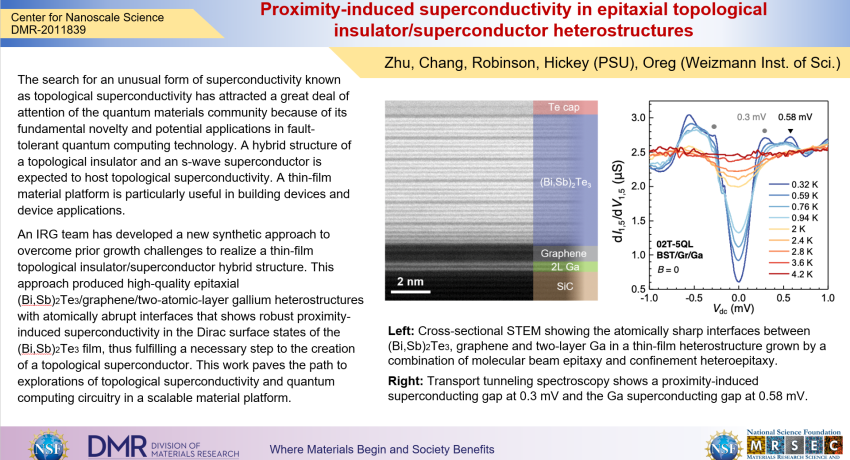What Has Been Achieved: The synthesis and measurement of epitaxial thin-film topological insulator/superconductor heterostructure leading to evidence for proximity-induced superconductivity in the surface states of the topological insulator. This combines confinement heteroepitaxy, a growth technique pioneered by members of the IRG, to synthesize graphene/Ga superconducting films, followed by the MBE growth of (Bi,Sb)2Te3 films. Van der Waals techniques are used to construct a clean, lithography-free tunnel junction and transport tunneling spectroscopy is used to obtain evidence for proximity-induced superconducting gap opening in the surface states of the (Bi,Sb)2Te3 film. Evidence of single vortex motion is observed. These measurements lay a foundation for the future exploration of topological superconductivity in this novel, large-area heterostructure.
Importance of the Achievement: A thin-film topological insulator-based hybrid structure that enables the studies of topological superconductivity and a potential quantum computing platform
How is the achievement related to the IRG, and how does it help it achieve its goals? The pursuit of topological superconductivity in scalable material platforms is a central objective of this IRG. Results demonstrated in this work is a significant step towards this goal. The combination of key expertise (confinement heteroepitaxy, MBE and van der Waals transport techniques from different team members is crucial to the success of this project.
Nature Materials (2023). https://doi.org/10.1038/s41563-023-01478-4
Nature Materials (2023). https://doi.org/10.1038/s41563-023-01533-0


